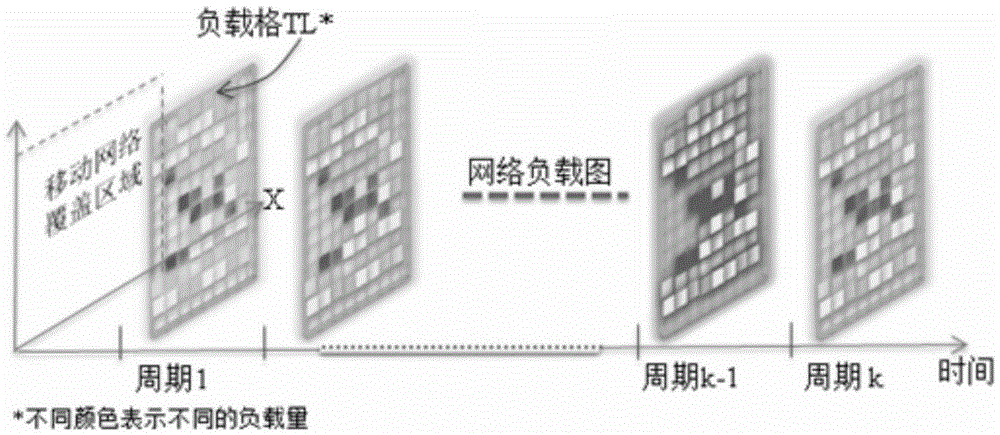Load balancing method for super-dense heterogeneous mobile cellular network
A mobile cellular network, load balancing technology, applied in network planning, network traffic/resource management, electrical components, etc., can solve problems such as inability to achieve load balancing, low load, and reduced performance
- Summary
- Abstract
- Description
- Claims
- Application Information
AI Technical Summary
Problems solved by technology
Method used
Image
Examples
Embodiment Construction
[0044] In order to make the above-mentioned features and advantages of the present invention more comprehensible, the following specific embodiments are described in detail in conjunction with the accompanying drawings.
[0045] The technical problem to be solved by the present invention is: how to design an effective load balancing method for the time-varying and uneven spatial distribution of the load in the mobile communication network to improve the wireless performance in 4G and post-4G ultra-dense heterogeneous cellular networks. Resource utilization efficiency and system capacity (eg, fixed spectrum bandwidth and fixed transmit power of the base station).
[0046] In order to solve the above technical problems, the present invention provides a load balancing method for ultra-dense heterogeneous mobile cellular networks, such as figure 1 shown, including the following steps:
[0047] S1. Spatially divide the coverage area of a certain ultra-dense heterogeneous mobile...
PUM
 Login to View More
Login to View More Abstract
Description
Claims
Application Information
 Login to View More
Login to View More - R&D
- Intellectual Property
- Life Sciences
- Materials
- Tech Scout
- Unparalleled Data Quality
- Higher Quality Content
- 60% Fewer Hallucinations
Browse by: Latest US Patents, China's latest patents, Technical Efficacy Thesaurus, Application Domain, Technology Topic, Popular Technical Reports.
© 2025 PatSnap. All rights reserved.Legal|Privacy policy|Modern Slavery Act Transparency Statement|Sitemap|About US| Contact US: help@patsnap.com



